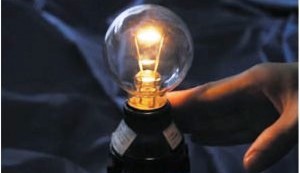Eco bulb, a bright idea
October 14, 2015
on
on

It’s rare to see a traditional light bulb with a tungsten filament these days. There are now more efficient methods to produce light, but it could be that the technology is about to undergo a makeover. The director of photonics at the Advanced Research Center (PARC) of Osaka University, Junichi Takahara, points out that incandescent lamps are actually very efficient (around 90%) electron-to-photon converters if you take both visible and infra-red emissions into account. By reducing the amount of energy expended on radiating energy in the IR part of the spectrum it is possible to improve the overall efficiency of a filament lamp.
Working on an idea by US researcher, John F. Waymouth who suggested that holes in the filament surface would suppress long wavelength radiation, he has re-engineered the humble filament. By forming a nanostructure on the surface of the filament he has succeeded in controlling the emission spectrum of the light bulb. The company Metalumina has been formed to market 'Eco Bulb' which is claimed to be a highly-efficient, eco-friendly light bulb with a cosy glow.
Working on an idea by US researcher, John F. Waymouth who suggested that holes in the filament surface would suppress long wavelength radiation, he has re-engineered the humble filament. By forming a nanostructure on the surface of the filament he has succeeded in controlling the emission spectrum of the light bulb. The company Metalumina has been formed to market 'Eco Bulb' which is claimed to be a highly-efficient, eco-friendly light bulb with a cosy glow.
Read full article
Hide full article


Discussion (3 comments)